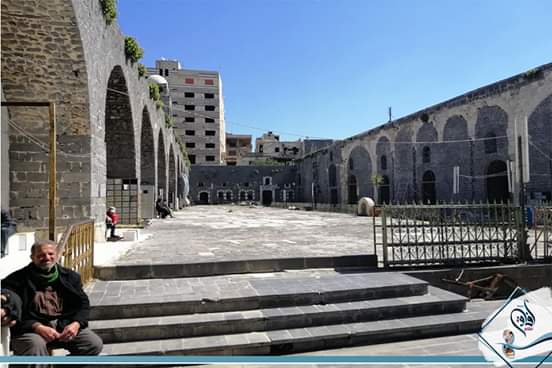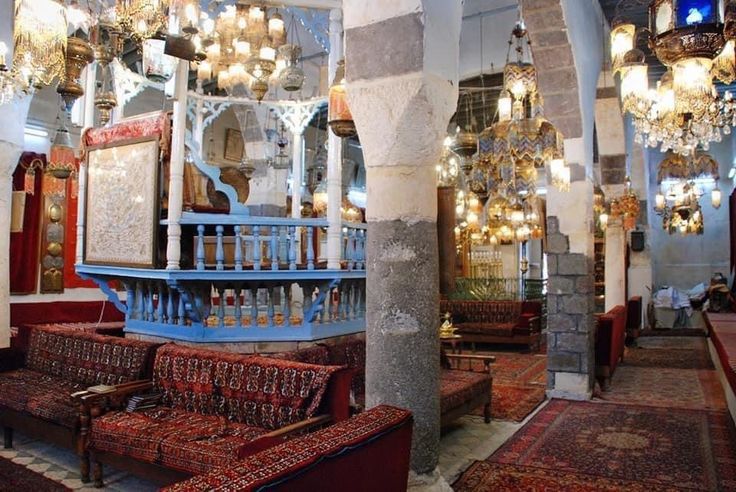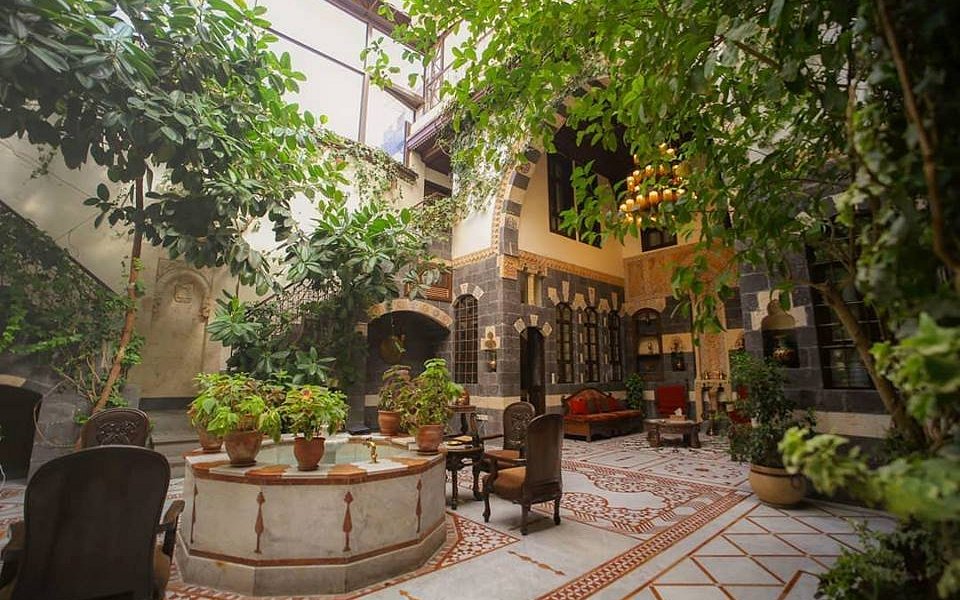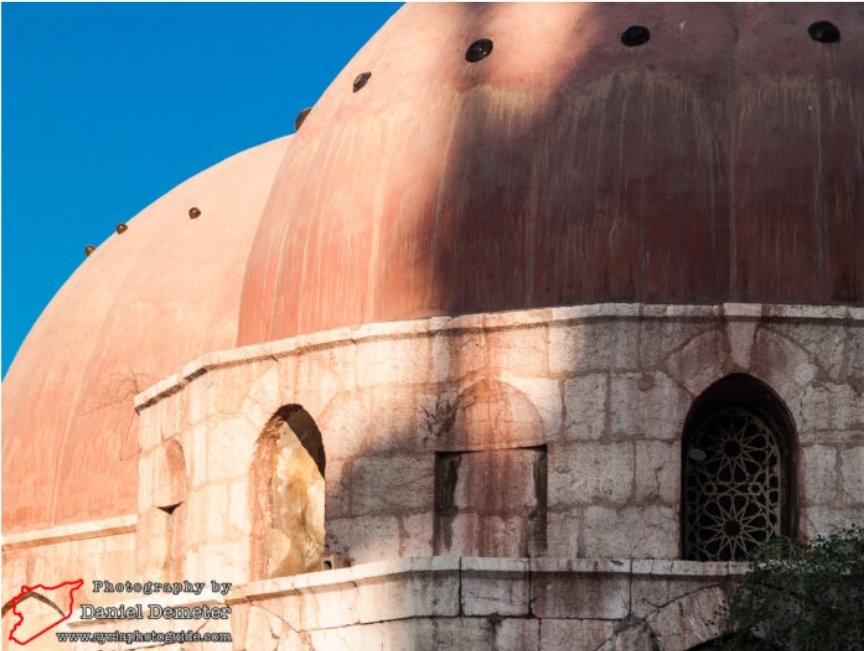The mosque is attributed to the gnostic Ibrahim al-Himsi (d. 897 AH). His disciples built it in a simple Mamluk style, and it houses the sheikh’s tomb, topped with a dome covered in green tiles. Its eastern facade bears an inscription in vertical poetry describing the sheikh’s spiritual station, and the interior prayer hall is adorned with muqarnas mihrabs. The mosque remained undamaged and was included in the Ministry of Tourism’s “Sufi Shrines” itinerary in 2019, with the aim of reviving spiritual heritage and Sufism in Hama.






